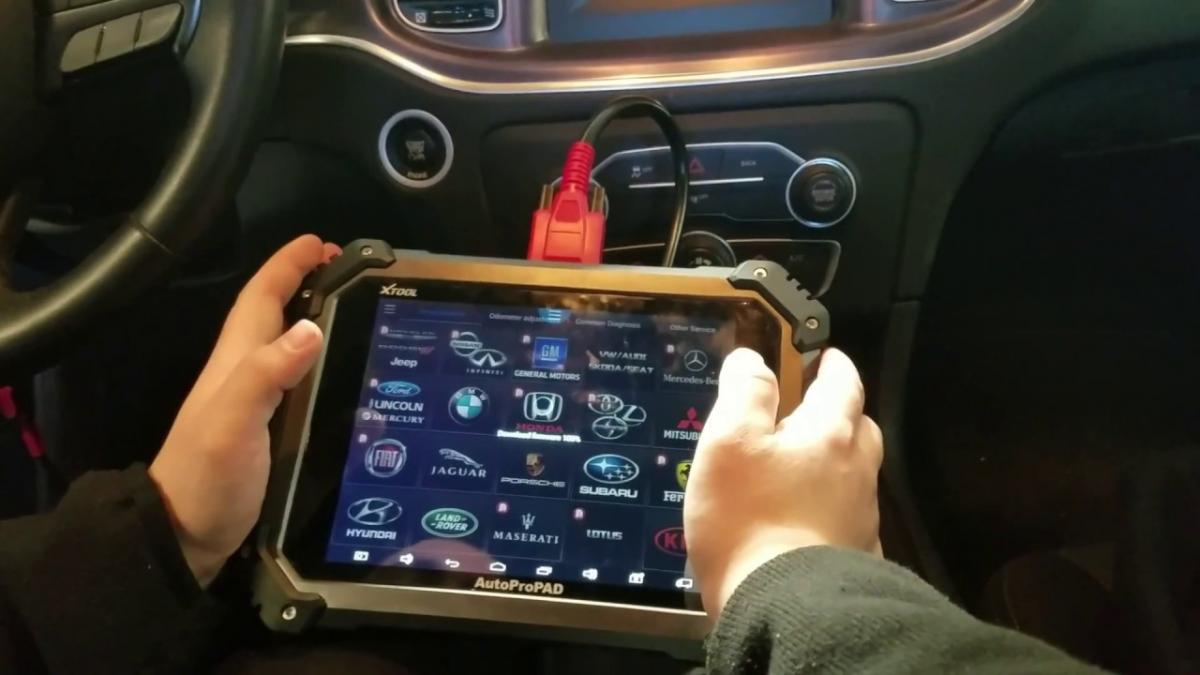The ECU’s Control Over Car Functions: How It Influences Performance
If you’re a car enthusiast, you’ve probably heard about the mysterious ECU—your car’s Electronic Control Unit. This little device is like the brain of your vehicle, quietly working behind the scenes to make sure everything runs smoothly. But what exactly does it control, and how does it impact your car’s performance? Let’s break it down in a way that’s easy to understand, so you can see just how big a role this device plays in your driving experience.

What Is an ECU, and Why Does It Matter?
Think of the ECU as the command center of your car. It’s the part that manages various electronic systems and components to keep everything in sync. It gathers information from sensors throughout the vehicle, processes it, and then sends commands to different systems based on that data. This real-time control helps optimize everything from fuel injection to ignition timing, and even your car’s cooling system.
Without the ECU, these systems would work independently, which would be far less efficient. By coordinating each component, the ECU keeps the engine running efficiently and improves overall performance. It’s like having a really organized friend who makes sure everything goes according to plan, even when things get hectic on the road. If you want a car that performs well, you need an ECU that’s up to the job.
Intermittent Key Fob Issues: When Your Key Fob’s Acting Up
A key fob is one of those little gadgets you don’t think much about until it starts acting up. Imagine this: you’re juggling bags, holding a coffee, trying to unlock your car—and nothing happens. Suddenly, that trusty little fob isn’t so reliable! Key fobs can be finicky at times, and intermittent issues are surprisingly common. Let’s dive into what might be causing your fob’s random behavior and what you can do about it.
Why Is My Key Fob Ignoring Me?
You’ve probably experienced it before: you press the unlock button, and…nothing. But then, after a few seconds or even a couple of tries, it works just fine! When a key fob works sometimes but not all the time, it can be incredibly frustrating. Usually, the issue boils down to one of three things: the battery, interference from other devices, or a problem with the car’s receiver.
First, the battery is often the culprit. Key fob batteries don’t last forever, and if yours is on its last leg, it may only send a signal intermittently. Think of it like a flashlight with a low battery—it sometimes flickers, but you can’t count on it. Another possible issue could be interference from other devices. Believe it or not, certain electronics, like Wi-Fi routers or even other key fobs, can interfere with the signal. If you’re trying to unlock your car in a crowded parking lot or near many electronic devices, this might explain why your fob is ignoring you.

Signs Your Key Fob Battery Needs Replacing
If your key fob only responds occasionally, it might be time for a battery check. Weak or dying batteries are often to blame for intermittent issues. A strong, healthy battery will send a clear, consistent signal to your car, but as the battery starts to weaken, the signal can become spotty. If your fob seems to work best when you’re standing closer to the car, or if it only responds after multiple button presses, these are classic signs of a battery issue.
Replacing a key fob battery is usually pretty straightforward and affordable. You can find the right battery at most hardware or electronics stores, and in many cases, replacing it is as easy as popping off the back cover of the fob. If you’re not sure how to change it, your car’s manual might have a section on key fob maintenance. A fresh battery might just make all the difference and get your key fob back to working like new.

Mechatronics Programming: Where Mechanics Meet Electronics
In a world where machines are getting smarter, the field of mechatronics is becoming more and more exciting. Imagine combining mechanics, electronics, and programming to create robots, automated systems, and gadgets that seem almost alive. That’s what mechatronics programming is all about! If you’re curious about how machines can do things on their own—like sorting packages, assembling products, or even vacuuming your living room—then this field has a lot to offer you. Let’s explore the magic behind mechatronics programming, what it involves, and why it’s such an exciting area of study.

What Exactly Is Mechatronics Programming?
Mechatronics programming is a blend of mechanical engineering, electronic engineering, and computer programming. It’s the backbone of any system that combines mechanical movement with electronic control. Think about things like robotic arms, drones, or even self-driving cars. All these machines need both a body (mechanics) and a brain (electronics and programming) to work. In essence, mechatronics programming tells machines how to move, when to move, and why to move.
For instance, let’s say you’re working on a robotic arm that assembles parts. Programming tells it when to pick up a part, how far to move it, and where to place it. The electronics ensure each movement is precise, and the mechanics provide the strength and stability. When you combine these skills, you unlock the ability to create machines that are efficient, precise, and even adaptable. This is why mechatronics programming is so important—it’s what turns a basic machine into a smart, responsive one.

Car Diagnostics: Getting to Know Your Vehicle’s Health
Imagine if your car could talk and tell you exactly what’s wrong when something’s not right. Well, thanks to car diagnostics, it almost can! Car diagnostics is like giving your vehicle a check-up, helping you understand any issues without guessing. With modern technology, you don’t need to be a mechanic to have insight into your car’s health. Today, let’s explore how car diagnostics works, why it’s helpful, and what you can learn from that little “check engine” light.

What Is Car Diagnostics and How Does It Work?
Car diagnostics refers to the process of testing and analyzing various systems in your vehicle to detect potential issues. This process relies on something called an On-Board Diagnostics (OBD) system, which has been standard in cars since the 1990s. When you connect a diagnostic tool to your car’s OBD port, it reads data from the car’s computer systems and tells you what’s going on under the hood.
Most people have seen the dreaded “check engine” light pop up on their dashboard. This little light can be triggered by all sorts of things, from a loose gas cap to a more serious engine problem. When you plug in a diagnostic tool, it reads codes that give specific details about what’s triggering the light. It’s like having a mini doctor’s visit for your car, where the diagnostic tool acts as a translator between you and your car’s computer system.
Common Issues Detected by Car Diagnostics
Car diagnostics can reveal a surprising amount of information about your vehicle’s inner workings. Some of the most common issues detected are related to engine performance, emissions, and fuel efficiency. For example, if your car’s oxygen sensor is malfunctioning, it could affect fuel efficiency and cause excess emissions. A diagnostic tool would pick up on this problem, so you can fix it before it worsens.
Diagnostics can also detect transmission problems, issues with the catalytic converter, or misfires in the engine. Even something as minor as a malfunctioning sensor or a loose wire can be flagged. This is great because it allows you to take action early, preventing a small problem from becoming a major (and expensive) repair. If you’ve ever wondered why your fuel economy suddenly dropped, a quick diagnostic check could offer a clue.

Benefits of Doing Regular Diagnostic Checks
Doing regular diagnostic checks on your car is like practicing preventive healthcare. Just as regular doctor visits help you catch health issues early, diagnostic checks help catch car problems before they become costly repairs. Many people only think about diagnostics when something goes wrong, but routine checks can help keep your vehicle in tip-top shape.
One big advantage is cost savings. By catching problems early, you avoid the larger expenses that come with major repairs. For instance, addressing a small leak early on might only cost a few dollars to fix, but ignoring it could lead to a damaged engine, costing hundreds or even thousands to repair. Diagnostics also give you peace of mind. There’s nothing better than knowing your car is running smoothly, especially before a long road trip.
How to Interpret Error Messages: Deciphering Them Without Confusion
Error messages can feel like a foreign language, popping up with a string of codes or warnings that seem more confusing than helpful. But don’t worry; interpreting error messages doesn’t have to be a stressful experience! With a little understanding, you can break down these messages and get a clear idea of what’s going wrong and how to address it. Let’s take a look at how to read error messages and decode their hidden meanings.
Step 1: Break Down the Error Message
The first thing to remember about error messages is that they usually provide some helpful clues. If you see an error code, like “P0171” or “404,” it’s tempting to skip over it, but these codes are actually shorthand for specific issues. Generally, the first few letters or numbers indicate a specific area of your system. In car diagnostics, “P” codes refer to powertrain issues, “C” codes to chassis, and so on. In tech, a “404” code means a webpage isn’t found.
Taking a moment to separate each part of the code can make things easier to understand. You can even look up many error codes online to find out what they mean. Breaking down the message might feel technical, but it’s the first step in understanding where to focus your attention.

Step 2: Look Up Common Codes and Keywords
Once you have the error code or message, the next step is to look it up. Whether it’s a code from a car diagnostic tool or an error on your computer, a quick search can lead you to forums, troubleshooting guides, or even manufacturer websites that explain the issue. Keywords in the error message can also point you in the right direction. If you’re seeing something like “low battery” or “sensor malfunction,” those keywords tell you what the message is likely related to.
In many cases, people have encountered the exact same error message before and shared their solutions online. Searching for these specific codes or keywords often brings up advice from people who’ve successfully fixed the same issue. Even if you’re not able to resolve the problem yourself, knowing what the message means gives you a good idea of what needs attention.

